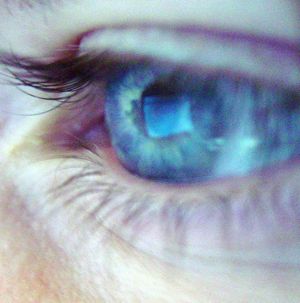A magazine where the digital world meets the real world.
On the web
- Home
- Browse by date
- Browse by topic
- Enter the maze
- Follow our blog
- Follow us on Twitter
- Resources for teachers
- Subscribe
In print
What is cs4fn?
- About us
- Contact us
- Partners
- Privacy and cookies
- Copyright and contributions
- Links to other fun sites
- Complete our questionnaire, give us feedback
Search:
The leading ace: the computer science
You've seen the trick. Now where is the science?
The psychology
There are several psychological effects going on here to make the misdirection work. The first is the rhythmic 'one, two, three, ace' count. You are conditioning the spectator, and as you prove it's correct for the first deal, their brain falls into the rhythmic pattern. This is what magicians call a convincer.
Secondly when you are secretly slipping the pointer card to the bottom of the pack you are focusing the spectators' attention on the card on the table, the ace. People follow social cues. They look where other people are looking. If you look at the tabled card so will your audience.

Finally you are also moving your hands back a little, moving them out of central field, to do the card displacement. Humans have a limited visual area where they attend to what's happening, and pay less attention to anything outside this area. All the interesting stuff, as far as the spectator is aware, is happening around the tabled card.
Your action of pointing with the card is psychologically invisible. It just looks natural and helpful, not really important, so people tend not to remember it. Once the spectators' attention has been diverted by the cue, a change to the pointing card can be made.
Researchers have shown that you can make quite big changes to the world and people just don't notice it if they are paying attention to something else. This is called change blindness, and magicians often use this in their misdirection by making magical gestures, or pointing with their wand to get people to look away from where the real secret move is happening.
The human-computer interaction
Focus of attention is very important to interface designers. Naive designers often assume that just because they put instructions on the screen that people will read them. They may not even see them! That can even happen if they are really, really salient. If the person's focus of attention is somewhere else they may have no idea that the crucial message even exists.
The important things have to be placed in positions where a person's focus of attention will naturally fall. Suppose you are designing an interface where the person has to fill in a form and then, before moving to the next page, hit a save button. If they do not they will lose the information. If the save button is back at the top people may not see it and not do the save.
How do human-computer interaction researchers work out where people's focus of attention will be? One way is to use what are called eye trackers,which work out where someone's eyes, pointing and track their movements. One way to do this is to just point a video camera at the eye. A computer then processes the image to work out where the gaze is directed.
Eye trackers have shown, for example, that when people look at a web page, they first look in the top-left hand corner. That's why company logos usually sit there (though the Google generation have now learnt not to look at the top)! According to usability guru Jakob Nielsen, the right hand side of a web page may rarely be looked at. People's eyes flick around quickly, often in an F-shaped pattern down the screen. They will scan along the top. If nothing is seen to suck their attention in they will look down the left hand side, scanning across once more lower down. If the person's attention hasn't been captured by then, you have probably lost them. If you are an advertiser you may not want your advert down the right hand side!
Design principle
When designing web sites, put important things down the left hand side and make sure there is something to grab attention near the top.


